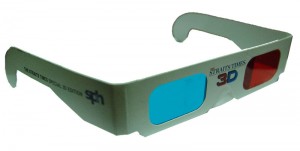After doing some work recently involving the use of images of Singapore’s past, I’ve learnt that there are only three sources for old images: PICAS, Singapore Press Holdings (SPH) and personal collections.
PICAS is the Picture Archives Singapore Database run by the National Archives of Singapore (NAS) that contains some of the oldest photographs of Singapore. To buy a photo from the database is just as archaic. You cannot buy a photo online. Instead, you fill up a form and place your order at NAS itself, and return to collect the actual print. The only plus point is that you pay much less for a photo from PICAS, as compared to SPH, if you’re publishing for educational and cultural purposes.
While PICAS may have the oldest photographs, SPH has the most extensive collection of images of Singapore’s past. In fact, many images in the PICAS database actually belong to SPH. This means you have to deal with SPH and pay their rates if you want to use the SPH photos. Their extensive database is no surprise as SPH is a news organisation that covers all the important events of our nation’s lifetime. While it has an online SPH Photobank System, that database only carries current photos. To see all the old photos SPH has, you have to make an appointment to go down to their Information Resource Centre to search their internal servers.
The final resource for old images of Singapore is an emerging one thanks to the proliferation of digital imaging tools. People can now easily put up their personal collection of photographs and there are many gems out there waiting to be discovered. The National Library Board (NLB) is making an effort to canvass these photos and make them available via it’s Singapore National Album of Pictures (SNAP) website. It has also created a Flickr! set too. The only issue is with regards to their use. I have no idea if I can somehow obtain these photos for publishing. Another collection that exists online is Memories of Singapore, which is made up largely of photo collections from expatriates. Interestingly, the photos also give a glimpse of an expatriates’ life in Singapore in the past.
The problem with the current offerings of image databases is their poor quality and how there are so few of them. This limits the view of our colourful and diverse past, such that after a while, the same few ‘classic’ photos are reused to depict Singapore’s history. While SPH has built up the most extensive database, public access to it is troublesome, and the cost of use is prohibitive. PICAS is disappointing, and it could do so much better in terms of collection and the simple task of enabling online payment. I’m also a little puzzled as to why I wonder NLB is spearheading SNAP instead of NAS.
More importantly, I think there are a lack of image databases in Singapore and we’re depending too much on a few big institutions to document our lives. Especially nowadays, when there are so many event photographers and amateur photographers covering public life in Singapore. What is lacking are organisations and people who can amass these photographs, make sense of them, and make them available online so that future generations, and even you and I, can better remember what life is like today.
